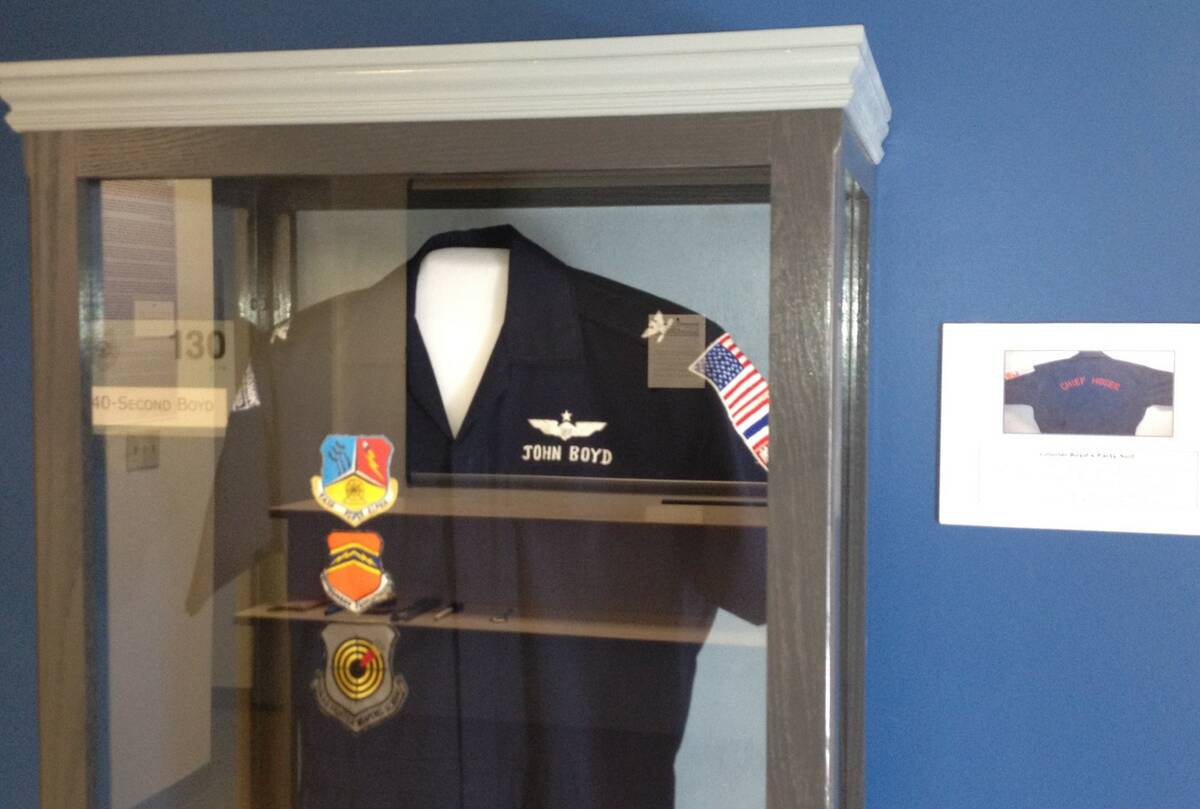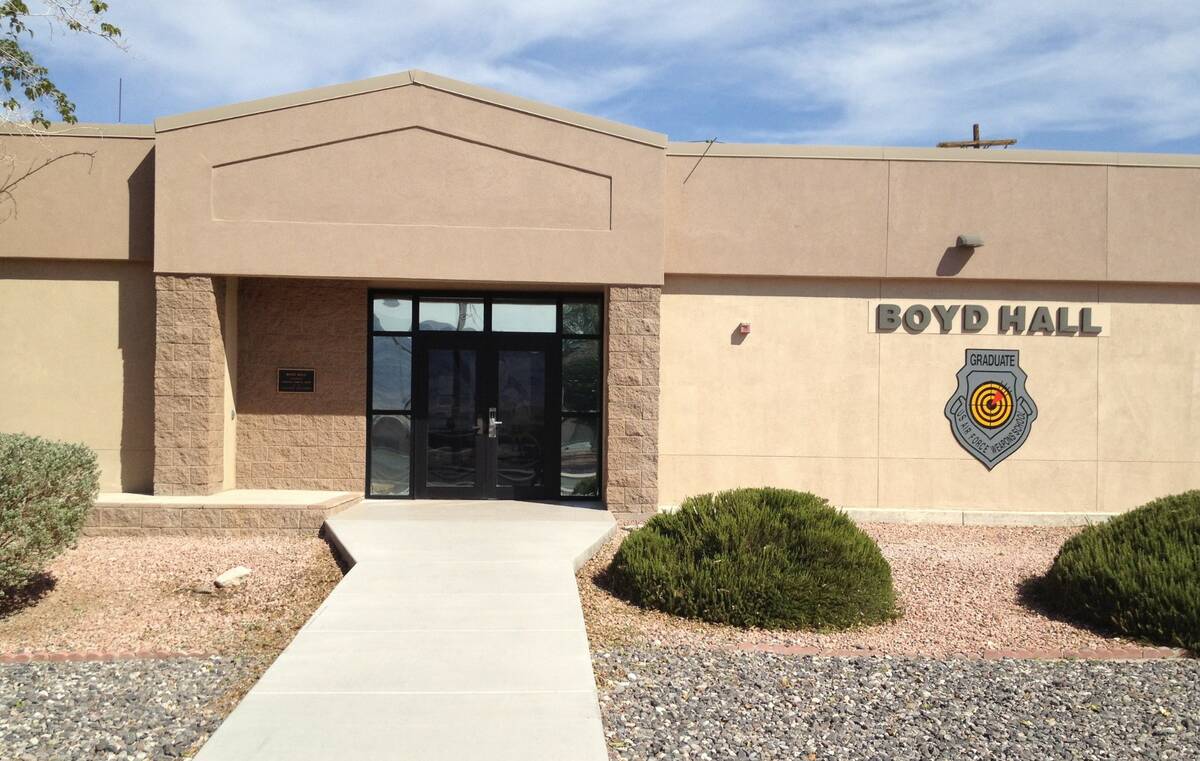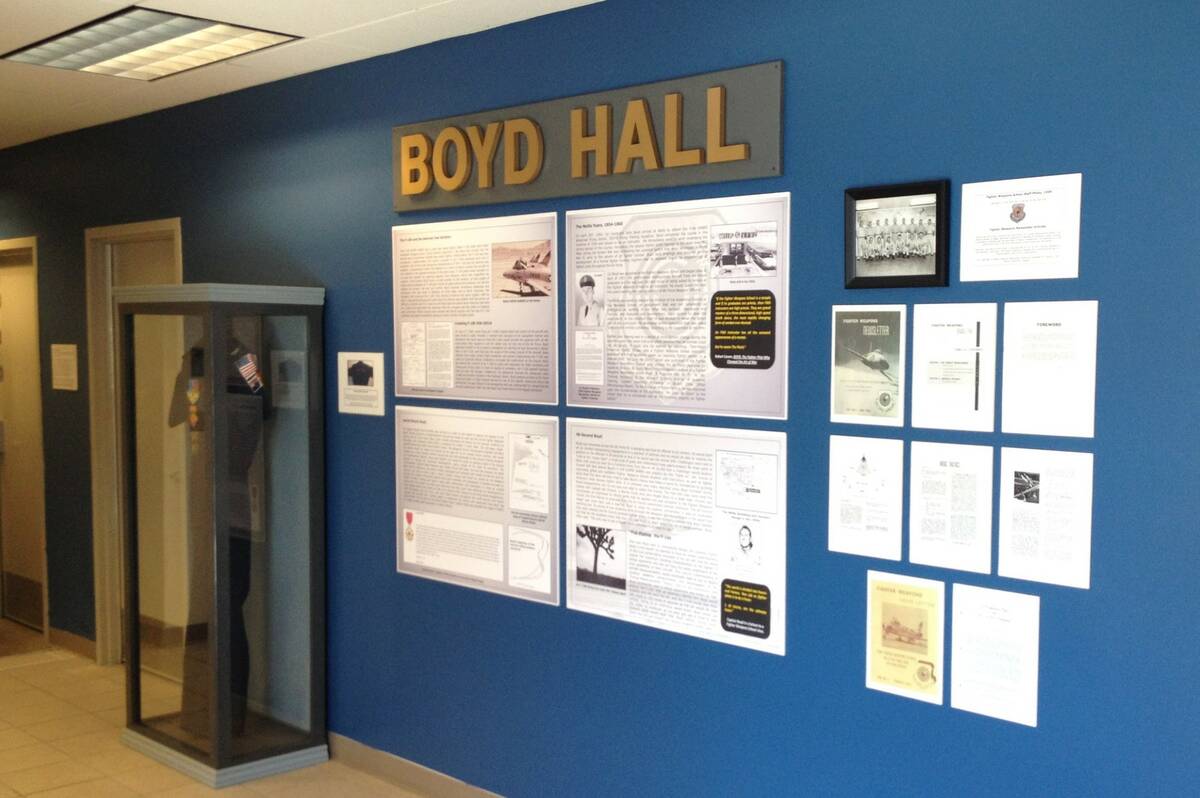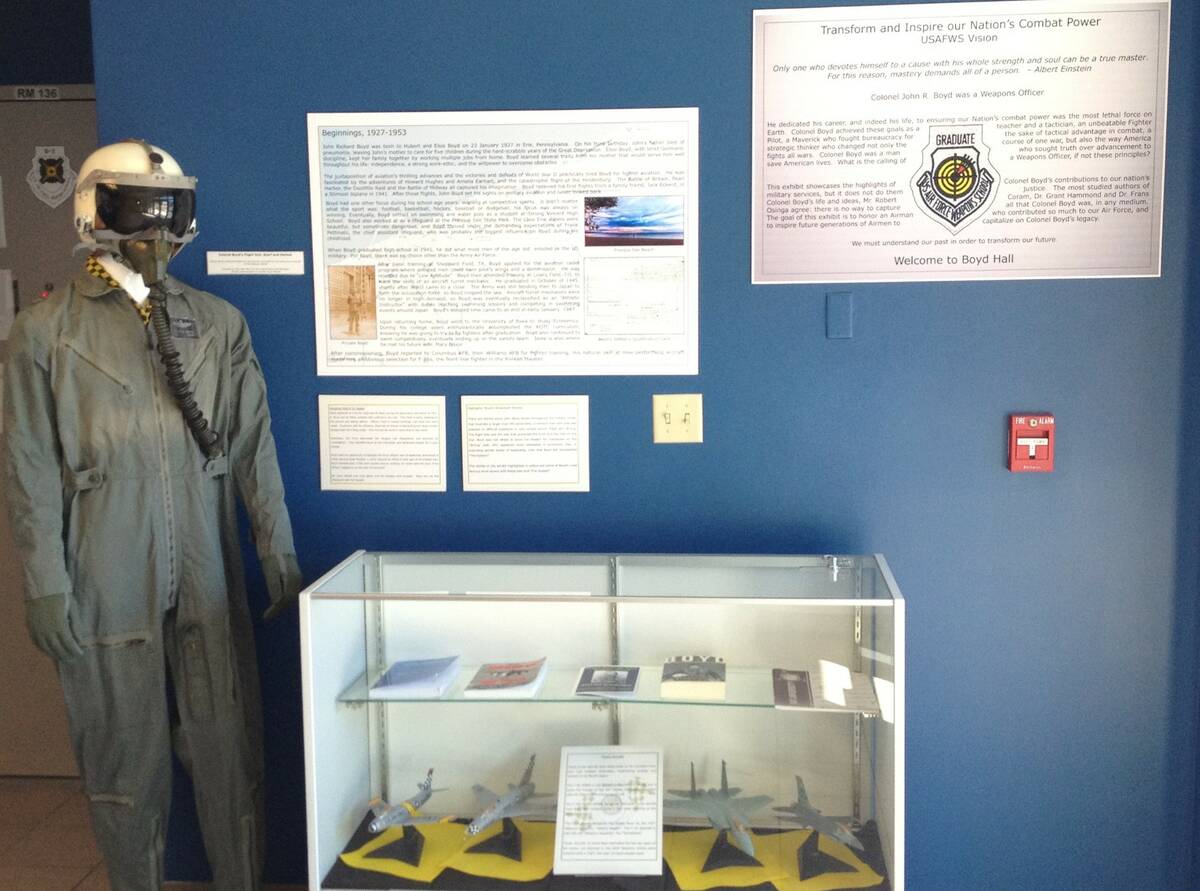Nellis AFB’s John Boyd ‘changed the way every air force in the world flies’
Who was John “Forty Second Boyd” and what was the Green Spot?
At Nellis Air Force Base, the U.S. Air Force Weapons School, reserved for the branch’s most talented pilots, is housed in the Boyd Building, named after renowned fighter pilot and military tactics pioneer Col. John Boyd.
From the mid- to -late 1950s, none of the country’s best military pilots who came to train at the base ever did defeat Boyd in simulated air-to-air combat with the latest model military jets, according to Robert Coram’s 2004 book, “Boyd, the Fighter Pilot Who Changed the Art of War.”
“He would become the most famous fighter pilot in the world,” Coram wrote.
Boyd, described as at times arrogant, profane and abrasive, challenged his students and pilots in the Air Force to beat him in air-to-air over in an area dubbed “the Green Spot” – an oasis of grass and trees so prominent it could be seen high in the air – about 90 miles from the base in Nye County.
He would bet his rivals $40 that they could not outmaneuver him in his F-100 jet to the point where their F-100 was behind his, film him with their on-board camera and declare victory — yelling into the radio “Guns! Guns! Guns!” – all within only 40 seconds.
Little did anyone other than those who lost the bet know of his incredible discoveries and abilities in flying the F-100 – soaring upward, turning violently and slowing down in a speed brake — to get behind his foe in under 40 seconds, and he usually did it in around 20 seconds, according to Coram.
Boyd and his challengers would take off from Nellis and fly until they were over the Green Spot rendezvous point.
At the start of the air-to-air, Boyd, in front of the other plane, would quickly move out of the other pilot’s view, shift, corkscrew around and suddenly show at the rear of the other F-100.
To the rival pilot’s shock, he would then shoot film from the F-100, shout “Guns! Guns! Guns!” and laugh derisively into the radio, adding, “You just got hosed!”
Boyd, bestowed with nickname “Forty Second Boyd,” had been considered a formidable fighter pilot during the Korean War, though the war ended before he could join the fighting. He was posted at Nellis as a fighter flight instructor in 1952 and stayed there for six of his 24 years in the force.
While at Nellis, the competition among pilots and the limits of what the newer jets could do made flying very dangerous – Boyd would say in an oral history that dozens of pilots died in crashes while he was there.
Boyd’s influence on the U.S. military in the 1960s and beyond would go way beyond flying, specifically his ideas on military theory, according to Coram.
Marine Corps Commandant Charles Krulak, among others, credited Boyd’s battle tactics theories, adopted by the U.S. military, for “America’s victory in the Gulf War (in 1991)…the concept of maneuver, intent, and agility that led to victory.”
Boyd also successfully lobbied the Air Force brass to move away from larger, heavier aircraft in favor of lighter and faster planes like the F-16, Coram reported.
Today, at Boyd Hall, the Air Force exhibits Boyd’s flight suit and helmet and his own drawing of his innovative concept used in military decision making against enemies in war, called the “OODA Loop.”
Boyd died at age 70 in 1997, concerned his accomplishments would be forgotten. His remains were buried at Arlington National Cemetery.
“He had more contributions to fighting tactics, aircraft design and the theory of air combat than any man in Air Force history,” Coram wrote. “He changed the way every air force in the world flies and fights.”
Contact Jeff Burbank at jburbank@reviewjournal.com or 702-383-0382. Follow him @JeffBurbank2 on Twitter.

























